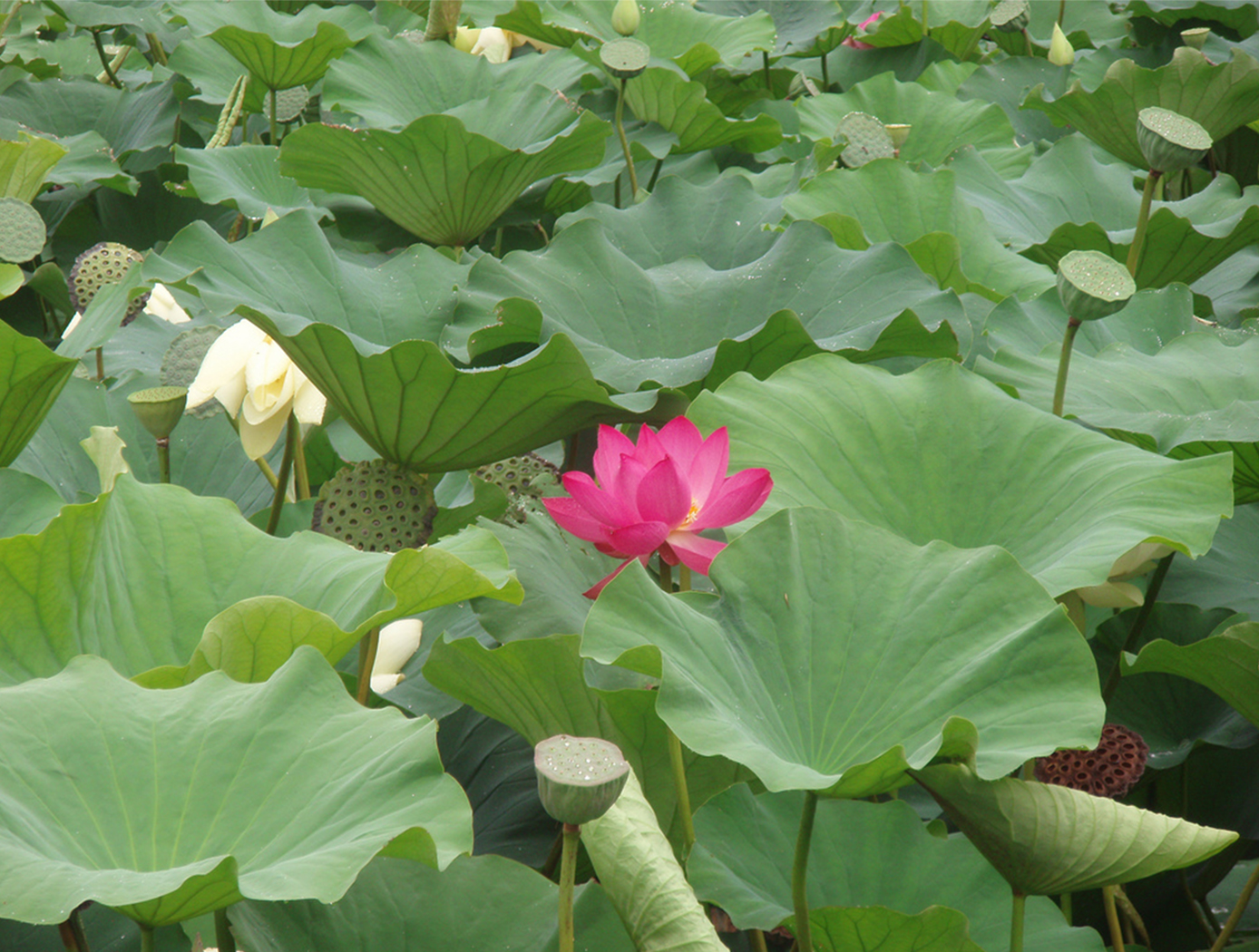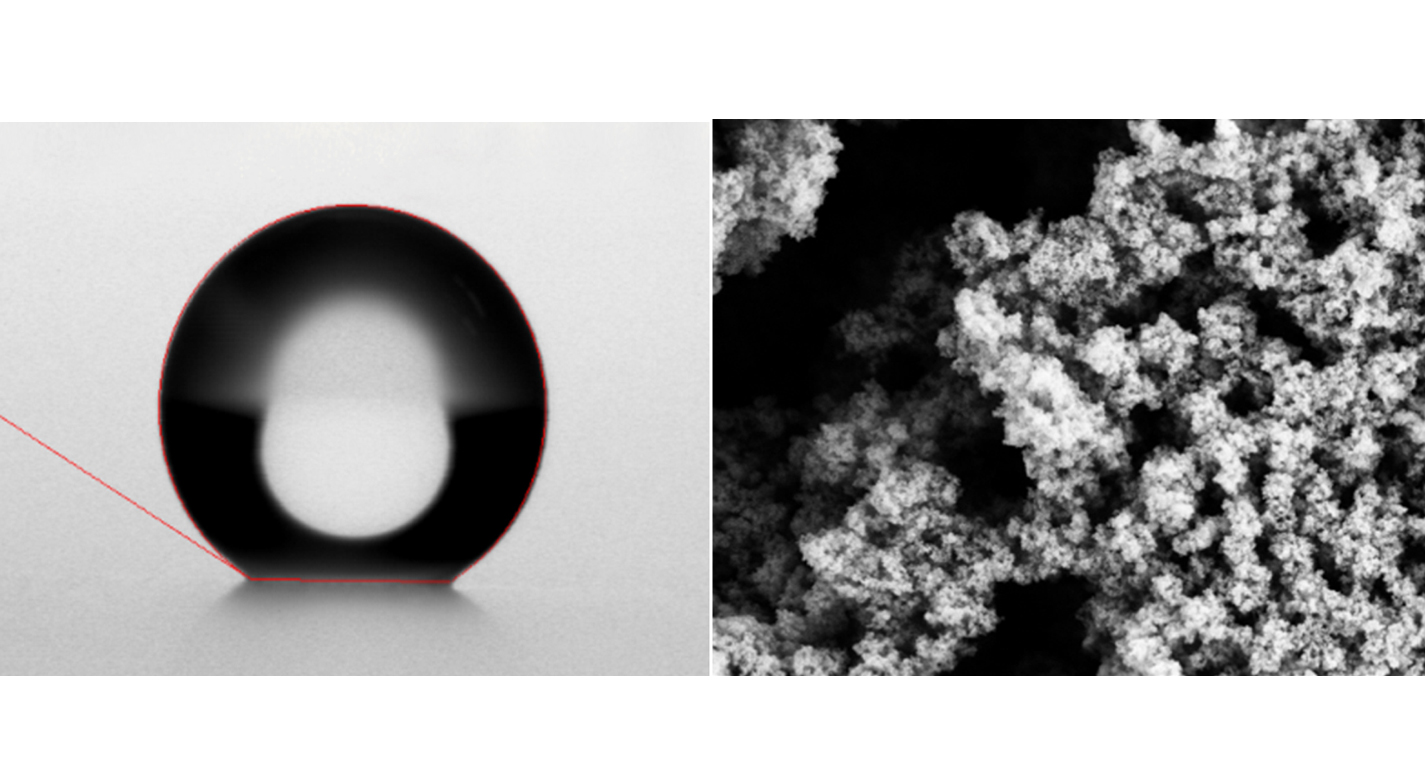Lotus Coating
materials and coatings
Lotus Coating (GSC-TOPS-19)
Mitigating Dust Accumulation and Repelling Liquids
Overview
The NASA Goddard Space Flight Center has developed a unique formulation of a Lotus leaf-like nano-textured dust mitigation coating, with hydrophobic properties. Originally developed to address a large scale problem of dust accumulation and contamination in dusty space environments such as the moon, Mars, comets, asteroids, and other planetary bodies, the coating can be used for other space applications and aeronautical applications, as well as earth-based ground applications. The Lotus Coating is a lightweight passive coating that also has super-hydrophobic properties and can prevent a variety of particles, liquids, or ice from sticking to the coated surface.
The Technology
This durable, transparent, nano-textured coating can be applied via a wet chemistry process to variety of rigid and flexible surfaces by spin coating, brush application, or spray application, making it applicable for many purposes beyond space flight and aeronautical applications. The coatings unique nano-textured surface and overcoat reduces surface energy and contact surface area, giving the coating anti-contamination and self cleaning properties that minimize dust, liquid, and ice accumulation on its surface, similar to a leaf on the Lotus plant. The coating is low outgassing, stable in vacuum, and can survive harsh spaceflight environments. Depending on requirements, the Lotus Coating can be tailored to fit the specific needs of a project or customer. This customization makes the Lotus system far more adaptive, allowing for a more diverse range of applications.


Benefits
- Can be used for dust, liquid, and ice mitigation
- Able to coat virtually any surface
- Easy to formulate & apply
Applications
- Works in air, as well as vacuum systems
- Ideal for surfaces that can not be easily cleaned
- Can be used on spacecraft surfaces, like radiators, mirrors, and solar arrays
- Potential in textile, automotive, health, pharmaceutical, electronics, aeronautics
- Potential clean room surfaces, building and construction industry, solar arrays, etc.
Technology Details
materials and coatings
GSC-TOPS-19
GSC-17004-2
https://ntrs.nasa.gov/citations/20120014251, https://ntrs.nasa.gov/citations/20150020486
|
Tags:
|
Similar Results

Alternative Transparent Coating Lotus Suitable for Optics with Vacuum Deposition Layer
In addition to previous LOTUS coating formulations, an additional optical formulation may be applied via vacuum deposition. This coating forms a top layer and may be applied in different thicknesses that serve to enhance its hydrophobic properties. The vacuum deposited material may comprise fluorinated ethylene propylene or a similar material. This coating is transparent and can be used on optical components or any other applications requiring a clear coating.

Particle Contamination Mitigation Methods
The following methods can be used individually or in combination to generate superhydrophobic surfaces:
Synthesis of novel copolyimide oxetanes with unique surface properties
The technology is the synthesis of a polyimide coating or film with a modified surface chemistry shown in Figure 1. A minor amount of an oxetane reactant containing fluorine is added to the polyimide, and the oxetane preferentially migrates to the surface, enabling relatively high concentrations of fluorine at the surface, without compromising the functional performance of the bulk of the polymide coating/film.
The copolymers exhibit mitigation of particle adhesion and fouling from exposure to various particulate and biological contaminants and exhibit reduced surface energy and increased surface fluorine content at extremely low oxetane loadings relative to the imide matrix (see Figure 2). Additionally, the short fluorinated carbon chains do not bioaccumulate, reducing the environmental impact of these materials.
Modifying surface energy via laser ablative surface patterning
This method uses a laser to create nanoscale patterns in the surface of a material to increase the hydrophobicity of the surface (see Figure 2). The benefits of hydrophobic surfaces include decreases in friction and increases in self-cleaning properties. This is an advantageous method of surface modification because it is fast and single-step, promises to be scalable, requires no chemicals, could be applied to a variety of materials, and does not require a planar surface for patterning.

Self-Cleaning Coatings for Space or Earth
The new transparent EDS technology is lighter, easier to manufacture, and operates at a lower voltage than current transparent EDS technologies. The coating combines an optimized electrode pattern with a vapor deposited protective coating of SiO2 on top of the electrodes, which replaces either polymer layers or manually adhered cover glass (see figure on the right). The new technology has been shown to achieve similar performances (i.e., over 90% dust clearing efficiency) to previous technologies while being operated at half the voltage.
The key improvement of the new EDS coating comes from an innovative method to successfully deposit a protective layer of SiO2 that is much thinner than typical cover glass. Using vapor deposition enables the new EDS to scale more successfully than other technologies that may require more manual manufacturing methods. The EDS here has been proven to reduce dust buildup well under vacuum and may be adapted for terrestrial uses where cleaning is done manually. The coatings could provide a significant improvement for dust removal of solar cells in regions (e.g., deserts) where dust buildup is inevitable, but water access is limited. The EDS may also be applicable for any transparent surface that must remain transparent in a harsh or dirty environment.
The related patent is now available to license. Please note that NASA does not manufacturer products itself for commercial sale.

Hydrophobic Epoxy Coating for Insect Adhesion Mitigation
This technology is a copolymeric epoxy coating that is loaded with a fluorinated aliphatic chemical species and nano- to microscale particle fillers. The coating was developed as a hydrophobic and non-wetting coating for aerodynamic surfaces to prevent accumulation of insect strike remains that can lead to natural laminar flow disruption and aerodynamic inefficiencies. The coating achieves hydrophobicity in two ways. First, the fluorinated aliphatic chemical species are hydrophobic surface modification additives that preferentially migrate to the polymer surface that is exposed to air. Secondly, the incorporation of particle fillers produces a micro-textured surface that displays excellent resistance to wetting. Combined, these two factors increase hydrophobicity and can also be used to readily generate superhydrophobic surfaces.

Cryogenic Selective Surfaces
These materials, which are composed of highly optically transmissive materials, are engineered to provide near-perfect reflection of the full solar spectrum in space. The materials are finely divided such that they scatter and reflect the incoming radiation from the UV down into the mid-IR and are also coated in some fashion with silver to extend the reflectance down into the far IR region of the solar spectrum. With this near-perfect reflectance of the complete solar spectrum, the scientists envision use of these materials for maintaining cryogenic temperatures for extended periods of time in space. The materials have also been developed into highly flexible, moisture resistant selective surface paint.The use and storage of cryogenics fluids is critical to many space operations, and while there are thermal control coatings in use today for spacecraft, none can provide this near-perfect reflection required for long-term maintenance of cryogenic temperatures.



